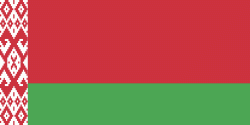Belarusian nuclear power plant (Belarusian nuclear power plant)
The Astravets Nuclear Power Plant (also called the Belarusian Nuclear Power Plant or Ostrovets Nuclear Power Plant) is a nuclear power plant located in the Astravyets District, Grodno Region in north-western Belarus. The power plant is built close to the Belarus-Lithuania border, being 40 km east of the Lithuanian capital of Vilnius. The plant is powered by a 1194-MW VVER-1200 unit supplied by Atomstroyexport, the nuclear equipment exporter branch of the Russian nuclear corporation Rosatom. Another 1194-MW VVER-1200 unit is under construction. The plant is owned by State Enterprise Belarusian NPP, which in turn is owned by the state-owned operator Belenergo.
Initial plans of the plant were announced in the 1980s, but were suspended after the 1986 Chernobyl disaster. The project was revived by the Belarusian government to have the country become energy-independent due to the Russia-Belarus energy dispute in 2007. The power plant was controversial due to its location being close proximity with Lithuania and the Lithuanian government has boycotted the power plant and established anti-radiation safety measures with its citizens. Construction of the first unit started on 8 November 2013 and the second on 27 April 2014. The plant entered commercial operation with Atomstroyexport transferring the first unit to Belenergo on 10 June 2021, becoming the first VVER-1200 unit to operate outside Russia.
Initial plans of the plant were announced in the 1980s, but were suspended after the 1986 Chernobyl disaster. The project was revived by the Belarusian government to have the country become energy-independent due to the Russia-Belarus energy dispute in 2007. The power plant was controversial due to its location being close proximity with Lithuania and the Lithuanian government has boycotted the power plant and established anti-radiation safety measures with its citizens. Construction of the first unit started on 8 November 2013 and the second on 27 April 2014. The plant entered commercial operation with Atomstroyexport transferring the first unit to Belenergo on 10 June 2021, becoming the first VVER-1200 unit to operate outside Russia.
Map - Belarusian nuclear power plant (Belarusian nuclear power plant)
Map
Country - Belarus
 |
 |
| Flag of Belarus | |
Until the 20th century, different states at various times controlled the lands of modern-day Belarus, including Kievan Rus', the Principality of Polotsk, the Grand Duchy of Lithuania, the Polish–Lithuanian Commonwealth, and the Russian Empire. In the aftermath of the Russian Revolution in 1917, different states arose competing for legitimacy amid the Civil War, ultimately ending in the rise of the Byelorussian SSR, which became a founding constituent republic of the Soviet Union in 1922. After the Polish-Soviet War, Belarus lost almost half of its territory to Poland. Much of the borders of Belarus took their modern shape in 1939, when some lands of the Second Polish Republic were reintegrated into it after the Soviet invasion of Poland, and were finalized after World War II. During World War II, military operations devastated Belarus, which lost about a quarter of its population and half of its economic resources. The republic was redeveloped in the post-war years. In 1945, the Byelorussian SSR became a founding member of the United Nations, along with the Soviet Union.
Currency / Language
| ISO | Currency | Symbol | Significant figures |
|---|---|---|---|
| BYN | Belarusian ruble | Br | 2 |
| ISO | Language |
|---|---|
| BE | Belarusian language |
| RU | Russian language |















